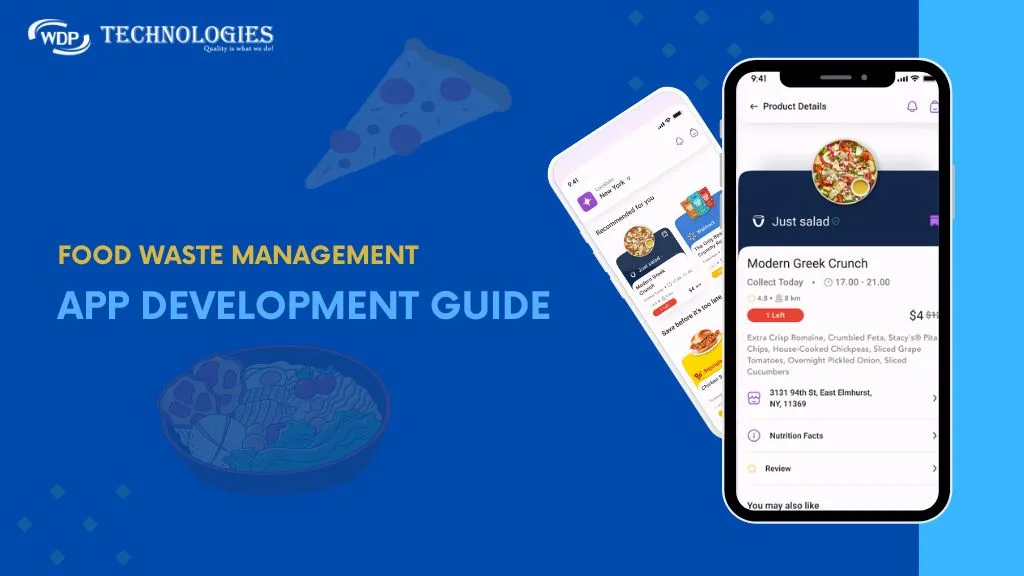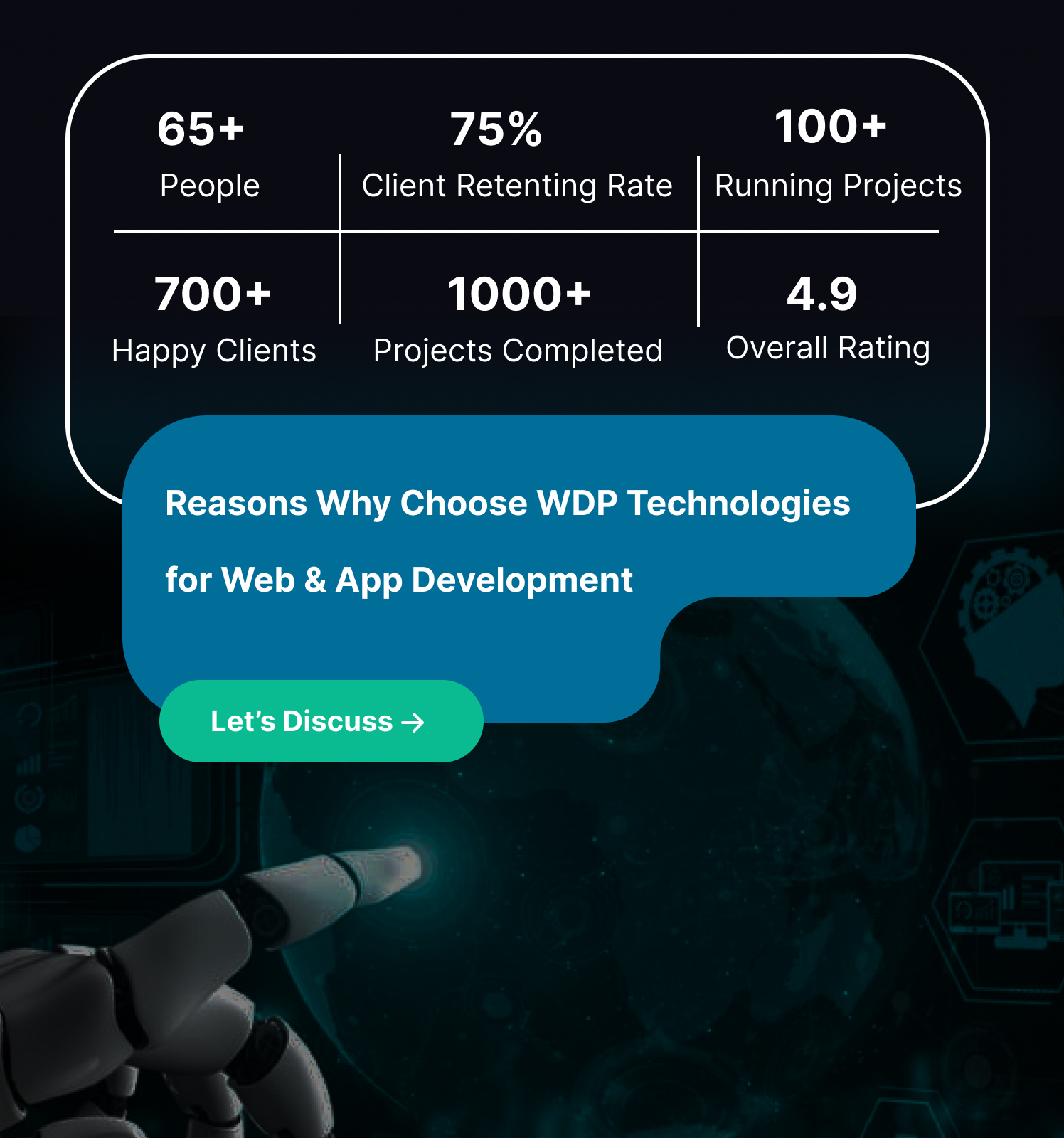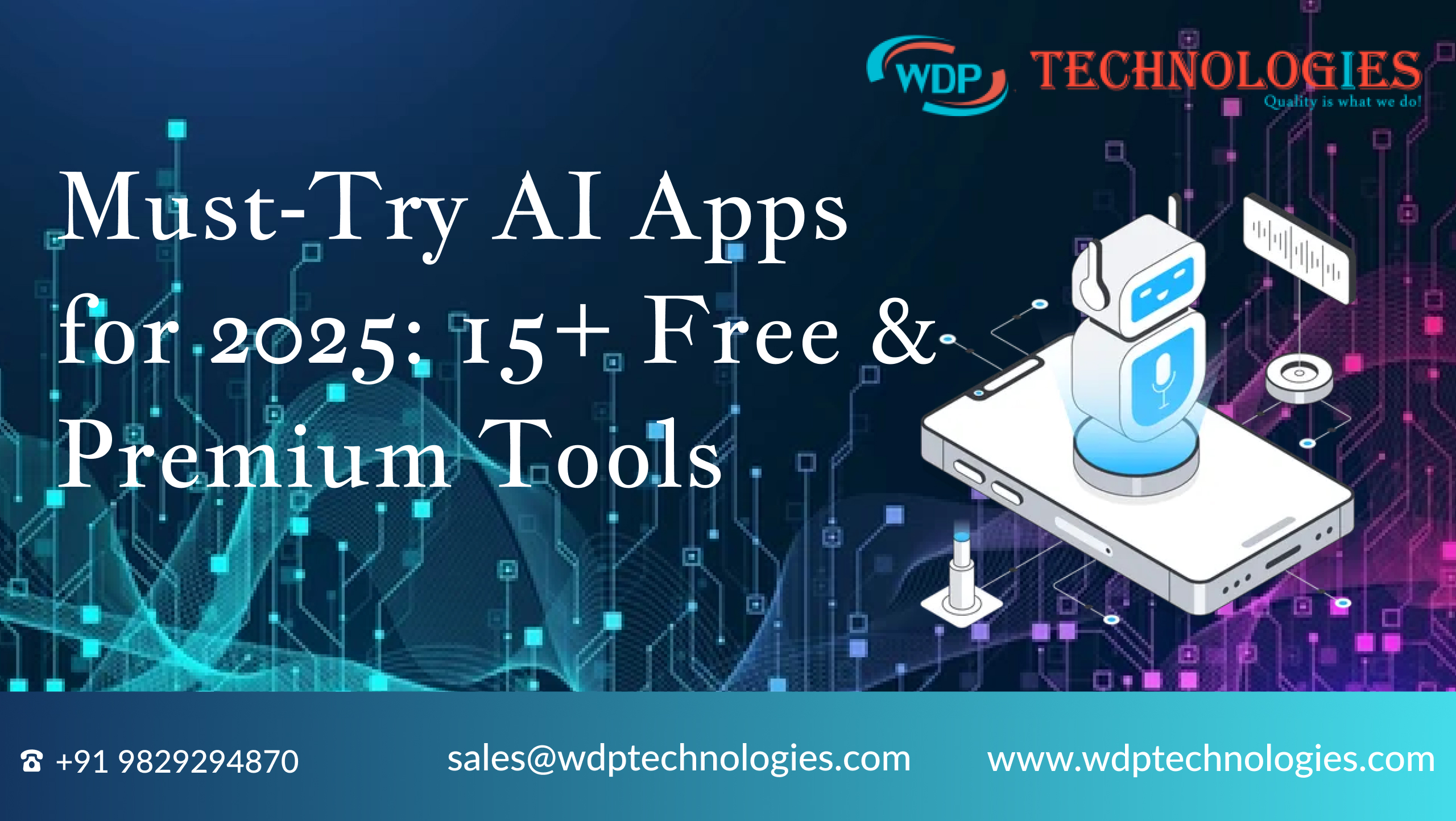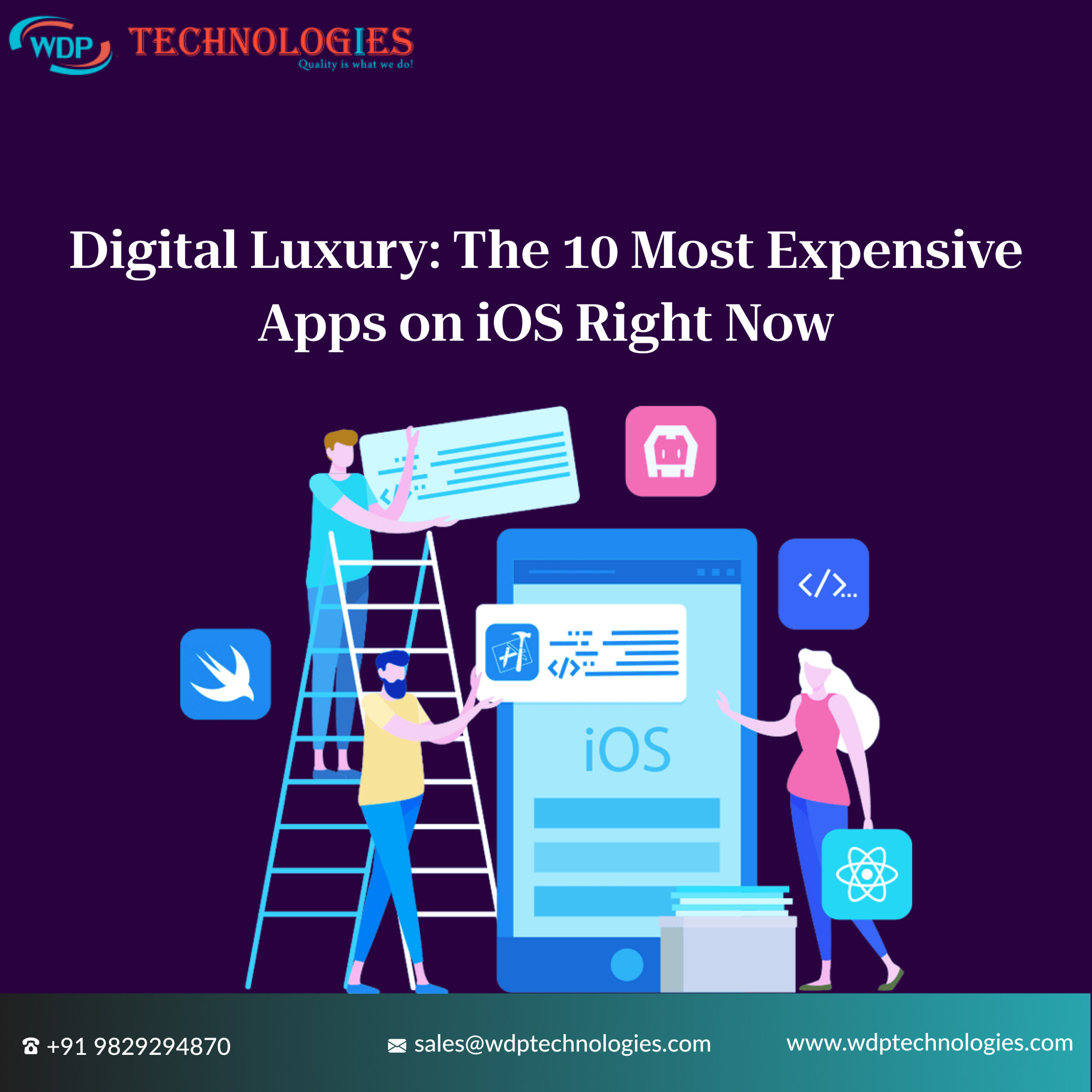Food waste is a significant global issue, with nearly one-third of all food produced for human consumption going to waste. This not only represents a significant economic loss but also has detrimental environmental consequences.. To address this problem, innovative solutions are required, and mobile applications provide an excellent platform for creating awareness and promoting sustainable practices.
In this guide, we will take you through the key steps and considerations for food waste management app development that can contribute to reducing food wastage.
Overview of Food Waste Management App
Food Waste Management App serves as a powerful tool in reshaping consumer behavior, fostering sustainable practices, and addressing the global challenge of food waste. Through a combination of user-friendly features, technological integration, and a commitment to impact, such apps play a vital role in promoting a more conscious and responsible approach to food consumption. By providing users with the tools and knowledge to adopt responsible food practices, these innovative applications can contribute significantly to building a more sustainable and equitable food system.
Types of Food Waste Management App
Food waste management apps come in various types, catering to different needs and user segments. Here are several types of food waste management apps:
1. Household Food Inventory Apps:
These apps focus on helping individuals manage their household food inventory, providing features for tracking, managing, and utilizing items effectively. They often include expiration date reminders and recipe suggestions.
2. Restaurant & Kitchen Waste Apps:
Tailored for businesses, these apps assist restaurants, catering services, and commercial kitchens in managing and reducing food waste. Features may include inventory tracking, donation coordination, and analytics to optimize purchasing.
3. Grocery Store Apps:
Designed for grocery stores, these apps aim to minimize in-store food waste by providing real-time inventory updates, offering discounts on items nearing expiration, and facilitating partnerships with food donation organizations.
4. Food Donation Platforms:
These apps connect individuals, businesses, and grocery stores with local food banks, charities, and shelters. Users can easily donate surplus food, reducing waste and addressing food insecurity.
5. Recipe & Meal Planning Apps:
Focused on reducing food waste at the consumer level, these apps suggest recipes based on available ingredients, helping users plan meals and utilize items before they expire.
6. Community-Based Apps:
Apps with a strong community focus encourage users to share tips, recipes, and experiences related to food waste reduction. These platforms foster collaboration and collective efforts to tackle the issue.
7. Educational Apps:
Apps in this category focus on raising awareness and educating users about the impact of food waste. They provide tips on responsible consumption, sustainable practices, and the environmental consequences of wasting food.
8. Government & NGO Initiatives:
Some food waste management apps are initiated by government bodies or non-governmental organizations (NGOs) to promote sustainable practices, enforce regulations, and monitor food waste on a broader scale.
9. Data Analytics & Insights Apps:
These apps focus on providing businesses and individuals with data analytics tools. They track food waste patterns, user behavior, and offer insights for optimizing food management practices.
10. Composting Apps:
Apps dedicated to promoting composting practices, guiding users on how to effectively compost food scraps. They may include information on composting techniques, compostable materials, and environmental benefits.
11. Meal Rescue Apps:
Targeting individuals, these apps aim to rescue surplus or near-expiry items from being discarded. Users can find and purchase discounted items from local businesses, reducing both food waste and expenses.
12. Sustainability Apps:
Focused on broader sustainability goals, these apps encourage users to make environmentally conscious food choices, considering factors beyond just expiration dates.
Key Functionalities of Food Waste Management App
1. Track Food:
Users can effectively monitor their food inventory through the app. This includes the ability to input and update information regarding the quantities of various food items they have at any given time. The app allows users to record and keep track of expiration dates, ensuring that they remain aware of items that may be nearing the end of their shelf life.
2. Plan Meals:
The meal planning feature assists users in making the most of their existing food inventory. By analyzing the items available, the app suggests recipes that users can prepare without the need for additional purchases. This not only helps in utilizing ingredients before they expire but also promotes a more sustainable and cost-effective approach to meal preparation.
3. Donate Food:
Facilitating a direct connection with local food banks and charities, this feature enables users to donate surplus edible food easily. The app streamlines the process, making it more convenient for users to contribute to their community and address issues related to food insecurity.
4. Compost Effectively:
The app provides valuable information and resources on effective composting practices for food scraps. Users can access guidance on what items can be composted, composting techniques, and the environmental benefits of composting. This feature promotes responsible waste management and encourages users to reduce their ecological footprint.
5. Educate and Inspire:
Users have access to a wealth of educational content within the app. This includes tips and best practices related to food storage, portion control, and responsible consumption habits. By providing users with knowledge and insights, the app aims to raise awareness about the impact of individual choices on food waste and encourages more mindful consumption patterns.
6. Build Community:
The community-building feature incorporates a forum within the app where users can engage with one another. Here, they can share their experiences, discuss challenges, and exchange tips on reducing food waste. Building a sense of community fosters collaboration, creating a supportive environment for users on their journey towards minimizing food waste.
7. Track Progress:
Leveraging data analytics tools, the app systematically tracks user behavior and consumption patterns over time. This feature provides users with insights into their individual habits and patterns of food waste. Simultaneously, it enables the app to gather valuable data for continuous improvement, allowing developers to make informed enhancements and interventions to further optimize user engagement and overall impact.
Benefits of Food Waste Management App
1. Reduced Food Waste:
The app empowers users to minimize food waste through its various functionalities, contributing to a significant reduction in the environmental and economic impacts of wasted food.
2. Increased Food Accessibility:
By facilitating food donation, the app connects those with surplus food to individuals facing food insecurity. This contributes to increased food accessibility for vulnerable populations.
3. Enhanced Sustainability:
The app promotes responsible food consumption and management, contributing to a more sustainable food system. Users are encouraged to make choices that align with environmental sustainability goals.
4. Business Opportunity:
Catering to a growing market segment increasingly concerned about sustainability and food waste reduction, the app presents a business opportunity. Its alignment with broader societal values positions it as a valuable tool in the ongoing efforts to create a more sustainable and responsible food ecosystem.
Food Waste Management App Development Guide
Developing a Food Waste Management App is a meaningful endeavor that can contribute to reducing global food waste. Here’s a comprehensive guide to assist you in navigating the various stages of app development:
1. Market Research:
Before diving into development, conduct a thorough market analysis. Identify your target audience—whether households, restaurants, or grocery stores—and examine existing apps in the food waste management landscape. Analyze competitors to understand what works well and what gaps exist that your app can fill.
2. Define Features & Functionalities:
Craft a user-centric experience by incorporating essential features:
- Food Inventory Tracking: Enable users to input and manage their food inventory.
- Expiration Date Alerts: Implement reminders to notify users of impending expirations.
- Recipe Suggestions: Provide creative recipe ideas based on available ingredients.
- Barcode Scanner: Facilitate quick and accurate entry of items into the app.
3. User Authentication & Onboarding:
Ensure a secure environment by developing a robust user authentication system. Design a seamless onboarding process that encourages users to input their food inventory details. Engage users from the start by highlighting the benefits of using the app.
4. Database and Data Management:
Establish a reliable database to store user information and food inventory data securely. Implement data encryption protocols to safeguard user privacy. Consider cloud storage for seamless access and synchronization across multiple devices.
5. Integration with External APIs:
Integrate external APIs to enhance the app’s capabilities:
- Food Databases: Access comprehensive databases for food items, nutritional information, and recipes.
- Grocery Store APIs: Enable real-time pricing and availability updates for enhanced user convenience.
6. Notifications and Alerts:
Implement a robust notification system:
- Expiration Date Reminders: Send push notifications to alert users of approaching expiration dates.
- Discounts and Promotions: Provide alerts for discounts, promotions, or donation opportunities based on inventory status.
7. Machine Learning Algorithms:
Leverage machine learning to enhance the app’s predictive capabilities:
- Expiration Date Prediction: Use algorithms to predict expiration dates based on storage conditions and usage patterns.
- Recipe Suggestions: Implement algorithms that suggest recipes based on available ingredients.
8. Social Integration:
Encourage community engagement by incorporating social features:
- Sharing Functionality: Allow users to share achievements, recipes, and food waste reduction tips.
- Social Media Partnerships: Explore partnerships with social media platforms to broaden your app’s reach.
9. Monetization Strategies:
Explore diverse monetization models:
- Freemium Versions: Offer basic functionalities for free and premium features through subscription plans.
- Partnerships with Grocery Stores: Consider commission-based models by partnering with grocery stores for referred sales.
- Sponsorships: Collaborate with sustainability-focused brands for sponsorships.
9. Testing and Iteration:
Conduct rigorous testing phases:
- Bug Identification: Identify and resolve bugs and glitches through comprehensive testing.
- User Feedback: Collect user feedback and iterate the app based on user suggestions to enhance user experience continually.
10. Launch and Marketing:
Strategically plan your app launch:
- Strategic Launch: Utilize social media, influencer partnerships, and press releases to create a buzz.
- Marketing Strategy: Develop a robust marketing plan to increase app downloads and user engagement.
11. Measure and Analyze:
Implement analytics tools to track app performance:
- User Engagement: Monitor user engagement, retention rates, and feature usage.
- Optimization: Use data insights to refine and optimize the app for better performance.
Cost of Food Waste Management App Development
Based on these factors, the estimated cost for developing a food waste management app can range somewhere between $25,000 and $250,000.
Here’s a breakdown of possible scenarios:
- Basic app with core functionalities: This could cost around $25,000 – $50,000, assuming a cross-platform development approach and hiring developers from a region with moderate hourly rates.
- More complex app with additional features: Expect a cost range of $75,000 – $150,000 for features like recipe suggestions, community features, or advanced data analytics, potentially requiring a native app development approach for optimal performance.
- Highly complex app with advanced functionalities: For apps with extensive features, AI integration, and intricate design elements, the cost can reach $200,000 – $250,000 or more, likely requiring a team of experienced developers and potentially involving a combination of native and advanced technologies.
Conclusion
Food Waste Management App serves as a vital tool in combating the global issue of food waste. By seamlessly integrating features like inventory tracking, donation coordination, and educational content, these apps empower individuals and businesses to make informed choices, reduce waste, and contribute to a more sustainable and responsible food ecosystem. As technology continues to advance, the ongoing evolution of these apps will play a crucial role in reshaping consumption habits, fostering community engagement, and making a meaningful impact on the journey towards a world with less food waste.













